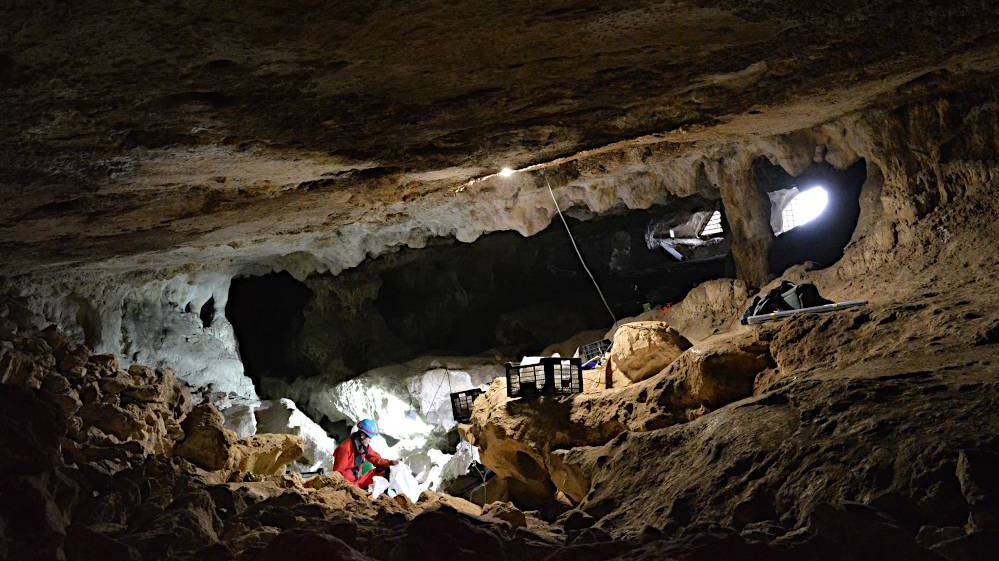The Iberian Peninsula plays an important role in the reconstruction of human genetic history. As a geographical cul-de-sac in south-west Europe, it is considered a retreat during the last ice age, which was accompanied by drastic temperature fluctuations. On the other hand, it is considered one of the starting points for the resettlement of Europe after the maximum glaciation. Previous studies had already reported the 13,000 to 18,000 year old genomes of hunter-gatherers from the Iberian Peninsula, providing evidence for the survival and continuation of a much older Stone Age lineage that has been superseded in other parts of Europe and is no longer traceable.
After the death of an organism, the genetic material is only preserved for a certain period of time and under very favorable climatic conditions. Obtaining ancient DNA from organisms from hot and dry climate zones therefore poses a major challenge for researchers. In Andalusia, in today’s southern Spain, the climatic conditions are similar to those in North Africa – from there, however, ancient human DNA from 14,000-year-old finds from a cave in Morocco has already been obtained. The new study therefore also fills crucial gaps in time and space. In particular, the role of the southern Iberian Peninsula as a refuge for Ice Age populations, but also possible population contacts across the Strait of Gibraltar during the last Ice Age, when sea levels were much lower than today, could now be directly investigated.
The genetic profile of people from central and southern Europe who lived before the maximum glaciation (24,000 to 18,000 years before our time) differs from those who resettled central Europe afterwards. However, the situation in Western Europe has not been clear until now due to a lack of genomic data from critical periods. The 23,000-year-old individual from the Cueva del Malalmuerzo near Granada is finally providing data from exactly the time when large parts of Europe were covered by massive layers of ice. The new study describes a direct genetic link between a 35,000-year-old individual from Belgium and the new genome from Malalmuerzo. “Thanks to the good data quality, we were able to find traces of one of the first genetic lineages to colonize Eurasia 45,000 years ago, and also establish connections to a 35,000-year-old individual from Belgium, which can now be traced to the 23,000-year-old individual from southern Spain.” , explains first author Vanessa Villalba-Mouco from the Max Planck Institute for Evolutionary Anthropology.
The individual from the Cueva del Malalmuerzo not only builds a bridge to earlier settlement periods but also to the hunter-gatherers of southern and western Europe who lived long after the last Ice Age. It also confirms the important role of the Iberian Peninsula as a refuge for human populations during the last Ice Age. From there, people migrated north and east again after the ice sheets receded. “With Malalmuerzo, we caught the right place and time period and tracked down a group of Paleolithic people at this putative refuge. The long-lasting genetic continuum in the Iberian Peninsula well after the Ice Age is truly remarkable, given the pre-glacial profile in other parts Europe had long since disappeared,” adds lead author Wolfgang Haak from the Max Planck Institute for Evolutionary Anthropology.
Interestingly, the authors could not find any genetic connection between the southern Iberian Peninsula and North Africa – despite a distance of only 13 kilometers across the Mediterranean Sea and despite parallels in the archaeological finds of both regions. “In Malalmuerzo we found no evidence of a genetic contribution from North African lineages, and vice versa we found no evidence of a genetic contribution from Palaeolithic southern Spain in the 14,000-year-old individuals from the Taforalt Cave in Morocco,” adds Gerd C. Weniger von der University of Cologne. “Why the Strait of Gibraltar was a barrier at the end of the last Ice Age is one of the unsolved questions of archaeological research in the western Mediterranean.”
The study also includes a number of younger individuals from the Neolithic period, the period when the first farmers came to Europe from the Middle East. The characteristic genetic descent from Anatolian Neolithic groups is indeed detectable in the individuals from Andalusia, suggesting that these early farmers spread over great geographical distances. “Neolithic people from southern Iberia, however, show a higher proportion of hunter-gatherer lineages. So the interaction between the last hunters and the early farmers in southern Iberia seems to have been much closer than in other regions,” says co-author Jose Ramos-Muñoz from the Universidad de Cadiz. The special role that the Iberian Peninsula played during the Ice Age still has an impact many millennia later. “Surprisingly, the Paleolithic genetic heritage via the hunter-gatherer contribution is still weakly detectable even among early farmers of the southern Iberian Peninsula, thus pointing to a local mixing of the two population groups with very different lifestyles,” adds Villalba-Mouco.
